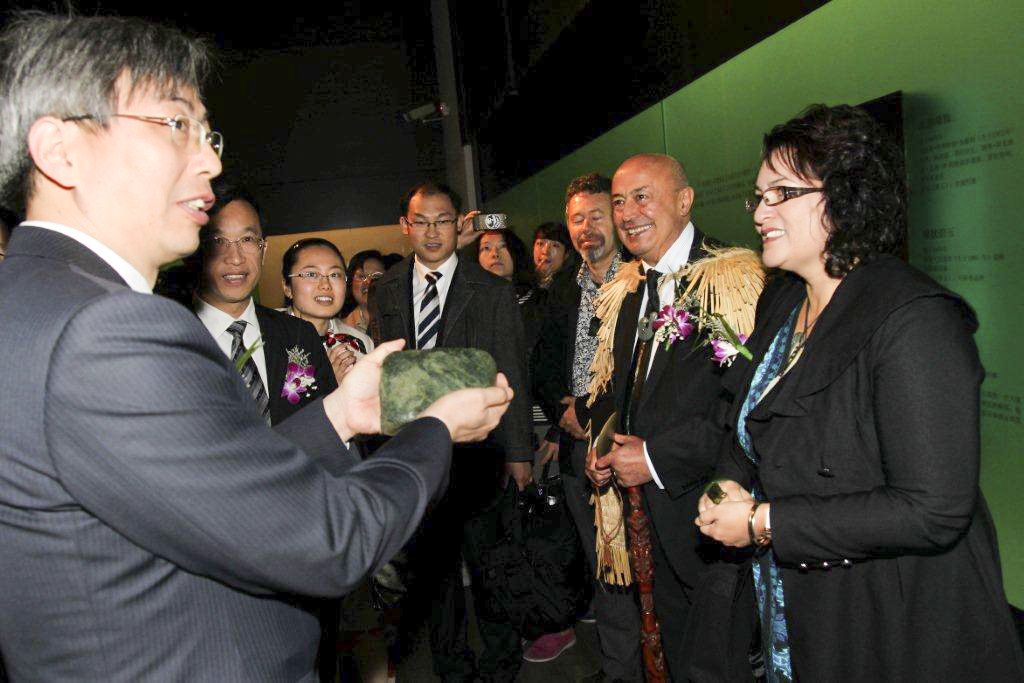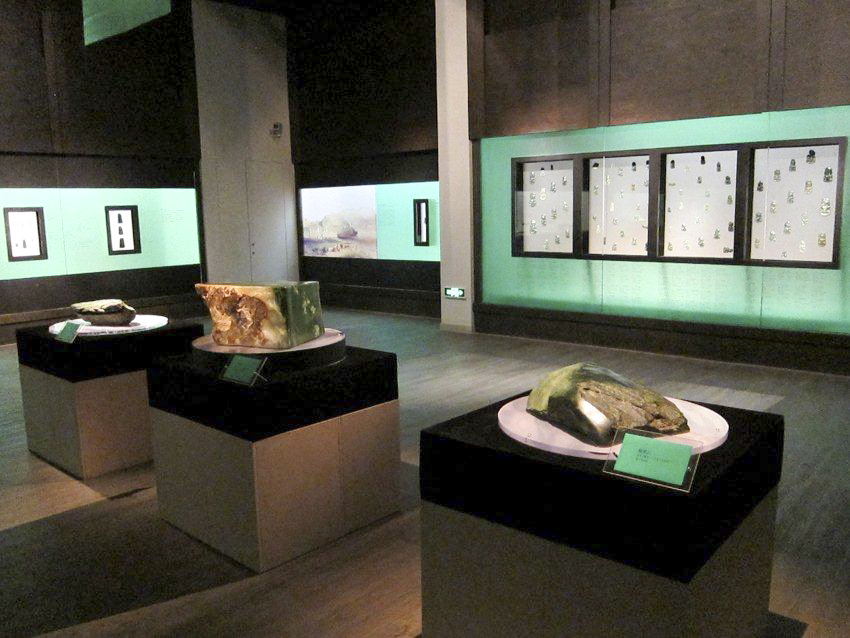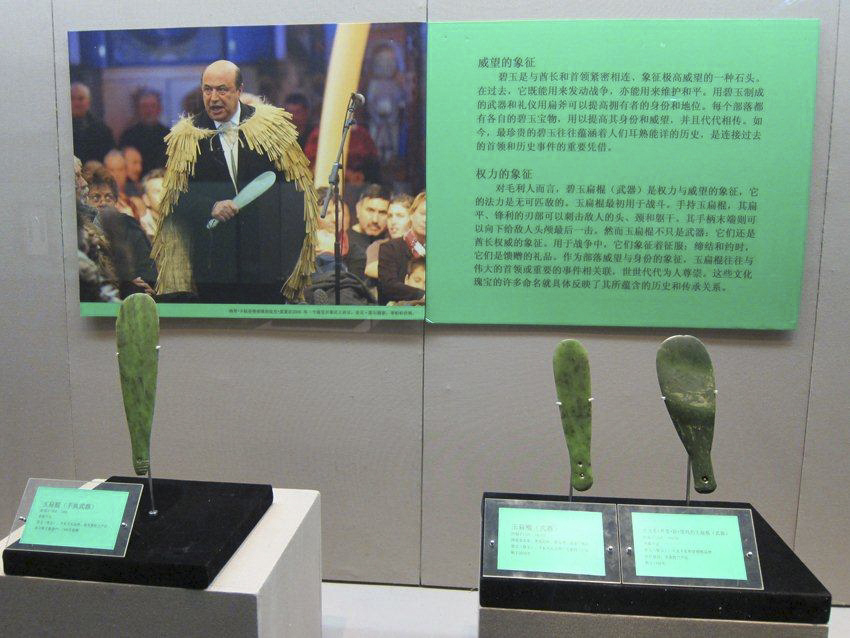Kura Pounamu exhibition is on the move in China
The Kura Pounamu exhibition features more than 200 taonga from Te Papa’s pounamu collections, including 96 hei tiki, 20 mere and four touchstones. It acknowledges the iconic status of pounamu within New Zealand and the cultural importance it has for Māori, particularly for Ngāi Tahu. The Kura Pounamu exhibition opened at Te Papa Museum in October 2009, off the back of the Ngāi Tahu Mō Tātou exhibition.
Kura Pounamu explains the origins of pounamu, which is found only in the South Island. It begins its journey in the rock, settling in river beds, or is carried out to sea and scattered along West Coast beaches. The exhibition also highlights the Poutini Ngāi Tahu story of Waitaiki.
As part of the celebrations to mark the 40th year of diplomatic relations between China and New Zealand, two Te Papa exhibitions headed to the National Museum of China in Beijing in 2012.
The Kura Pounamu exhibition is now travelling to five museums within China. Beijing, the first, was attended by Richard Wallace representing Ngāi Tahu; and the second opening at Liangzhu Museum, in Hangzhou, on 1 April, was attended by Lisa Tumahai and Piri Sciascia.
Piri and Lisa were honoured to officiate over the opening of the exhibition in Liangzhu. Liangzhu Museum is located in the heart of one of the largest and most significant jade archaeological sites in China, dating back over 5000 years. A pounamu kōhatu was gifted to the Liangzhu Museum on behalf of Ngāi Tahu.

Lisa Tumahai gifts pounamu to Chinese hosts.

The Kura Pounamu exhibition has been a big hit in China.

Pounamu mere on display in Liangzhu Museum.